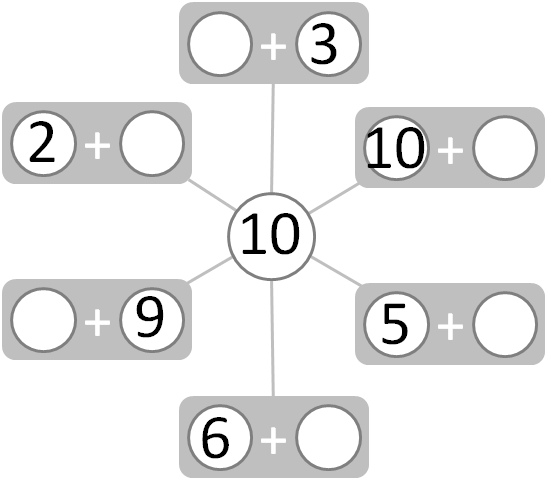Seven Up - A Great, Free Card Game!
Players: 1 or more
Ages: 5 and up
Cost: Free!
Math Ideas: Addition, sums to ten
Questions to Ask:
What number matches this card to make ten?
Is the game always beatable?
Can you create an arrangement of cards where you can never win?
This week's free game comes courtesy of Marilyn Burns.
If you don't know Marilyn, she is a legend in math teaching circles, and a decades-long advocate of games in math class. She wrote an article a while back about some of her favorite math games.
I picked Seven Up from that article because it's extremely easy to learn and fun to play, and it also helps kids practice a vitally important math skill. Let's check it out!
How to Play
To play Seven Up, all you need is a deck of cards with the face cards removed. Aces are 1s. (By the way, if you have a set of Tiny Polka Dot cards, even better for younger kids!)
Shuffle the cards and place seven of them face-up in a line. If you see a 10, or any pair of numbers that adds to 10, you can remove those cards. You always replace any cards with new ones from your deck.
The goal of the game is to remove all the cards. Do that, and you've won Seven Up!
But what if you get stuck? None of your seven cards pair off to make ten? Then simply deal a new card on top of each old card. Once you pair off the new cards, you reveal (and can play) the old cards underneath.
Where's the Math?
This game is a very math-forward card game. Your child could easily describe how the game uses math. But there's a little more to it than you might expect...
First of all, the game helps your kids learn the pairs of numbers that add to ten. This is an absolutely foundational math skill that will keep coming up over and over throughout your child's academic career. When they add 47 and 53, they might start by adding the 7 and 3 to make 10, then adding the tens to make 100. So isn't it nice to have a practice game that's more fun than a worksheet or flash cards?
The sneaky bit of math in this game is: every card has a pair. Aside from the tens, each card should have a card that combines to make ten. So if your child says "I got it down to two cards, but they don't make 10" you know they must have made a mistake or two somewhere along the way. But if they're consistently winning the game, they've probably got their pairs to ten down!
There is a small chance of losing the game, if you place a 6 on top of a 4 and then those become your last two cards. Oh well, you don't always win. But at least those final two cards add to ten!
Questions to Ask
As your kids are first learning their pairs to ten, you can ask them, "What would go with this card to make ten?"
If your child is using those Tiny Polka Dot cards, then perhaps the ten-frame cards would be a great introduction to the game. In those cards, you can clearly see the amount of dots needed to make ten. But as your kids get better, you'll want to transition to less structured and more abstract collections, culminating with the purple numeral cards.
For more confident kids, you can ask them "Is this game always beatable?" See if they can invent the conditions where they'd lose the game! When your kids investigate the edges of a game's design, they learn a lot about the underlying math that the game contains.




